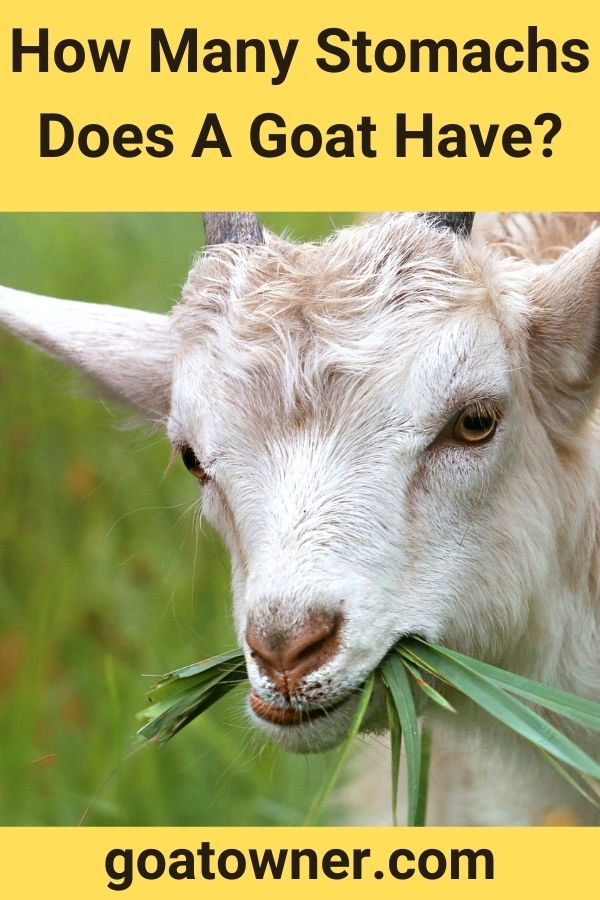Have you ever wondered why humans don’t eat grass?
Well, besides the fact that it doesn’t taste good to us, it’s because we don’t have multiple compartments in our digestive system that allow us to break grass down.
Goats and other ruminants, however, have this ability because of their complex digestive processes. Let’s learn more about how they do it.
What happens before food reaches the stomach?
The word “ruminant” comes from the Latin verb “ruminari,” which means “chewing over again.”
So, it should come as no surprise that chewing is very important to animals like goats.
In fact, this is the first phase of digestion, before the food even reaches their stomach.
Goats and other ruminants need to spend a long time chewing.
After they swallow the plant matter, it goes down to the reticulum.
But, some of the undigested material gets regurgitated back to the mouth, where the goat chews on it again.
This process is referred to as “chewing the cud.”
It might sound gross to a human, but it’s an important part of a goat’s digestive process.
What are the reticulum and rumen?
Think of the reticulum and rumen as a large holding area where foodstuff goes.
In there, it’s broken down by bacteria and other microorganisms in a process known as fermentation.
Plant matter like grass, forbs, and browse is full of fibrous materials, which human digestive systems can’t break down.
However, these substances are partly broken down in the goat’s reticulum and rumen.
In fact, a lot of the nutrients from this process are absorbed directly through the rumen wall and provide energy for the goat.
The rumen is also capable of breaking down all the B vitamins a goat needs, as well as aiding in protein synthesis.
Remember, goats are herbivores that eat plants instead of meat, so their diet is naturally low in protein.
Their stomach has adapted to extract as much protein as possible from their diet.
What is the omasum?
Whatever has not been digested in the reticulum and rumen moves on to the omasum.
Larger food particles are further broken down in this area, and water is also reabsorbed.
The omasum is certainly less exciting than the reticulum and rumen, but it’s still an important part of the goat’s digestive process.
What is the abomasum?
Finally, the materials move on from the omasum to the abomasum, which is where acidic digestion takes place, rather than microbial digestion.
The abomasum is most similar to the human stomach, which also breaks down materials using acidic digestion.
Similarly, in both humans and goats, material moves from the stomach/abomasum to the small intestine, where a final round of enzymatic digestion allows for maximum nutrient absorption.
Are goats born with all four components of their stomach?
No, when goats are born, their stomachs are more similar to a human’s.
The first three compartments take some time to develop.
Instead of eating plant matter, baby goats rely on their mother’s milk, which is rich in colostrum.
The mother’s milk supplies the babies with ample nutrition.
However, as the babies grow older and begin to eat more plant matter, their rumen is stimulated to grow.
Baby goats can successfully wean when all of the components of their stomach are developed.
Why are goats’ stomachs special in comparison to other ruminants?
Goats can eat plant species that other ruminants, such as cows and sheep, avoid.
These woody plants and weeds are inexpensive, which is a huge plus for raising goats.
In addition, because goats eat such a wide range of plants every day, they’re able to eat some poisonous ones without getting sick.
This is because they never eat one species of plant in high enough quantities to become ill from toxic exposure.
Goats’ stomachs also have a good ability to detoxify unwanted materials, making them less prone to bloating than other ruminants.
Can goats eat more than humans because they have four stomachs?
As we’ve learned, goats don’t really have four different stomachs, but, more specifically, they have four components to their stomach.
Yes, it’s true that goats spend the majority of their day eating and they can certainly consume a lot of plant matter.
But this isn’t because they have more room in four stomachs.
Rather, goats need to eat more in order to extract enough energy and nutrition from their diet.
For humans, it’s a lot easier to get fuel from the diversity of our food sources.
Still, goats beat us when it comes to fibrous matter and plants with anti-nutrients.
Those plants would leave us sick and unsatisfied, while they are perfect fuel for goats.
Can goats have stomach problems?
Like humans, goats can also have digestive issues.
One of the most common causes of goat digestive problems is a high-grain diet.
This is because goats require a high-fiber diet to keep their systems healthy.
Grains, by contrast, do not have enough fiber or the proper nutrient balance to keep the animals healthy.
As a result, goats that are fed a high-grain diet can come down with diseases such as urinary calculi or acidosis.
Other common food-related illnesses include grass tetany, white muscle disease, goiter, night blindness, and polioencephalomalacia.

